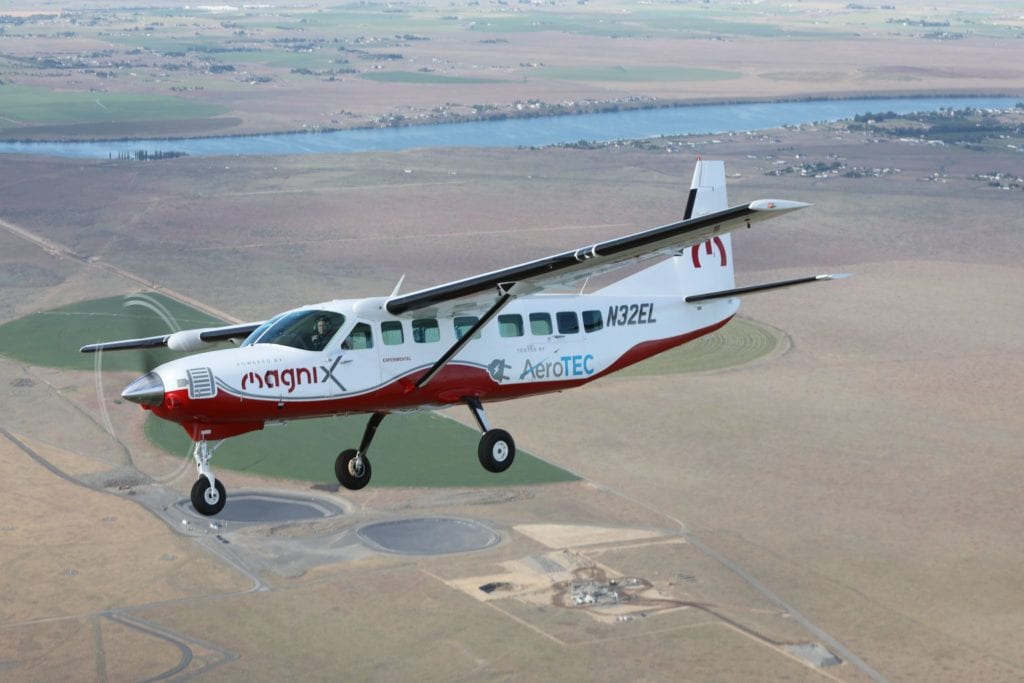
A thirty minute flight by an all-electric Cessna Grand Caravan, by MagniX and AeroTEC, brings electric aviation one step closer to primetime. (MagniX)
The Federal Aviation Administration has released final special airworthiness conditions for electric engines created by magniX, the agency announced on Sept. 27.
The special conditions, which go into effect Oct. 27, will account for the certification of magniX’s magni350 and magni650 model engines that use an electric motor, controller, and high-voltage systems as their propulsion systems.
“These engines have a novel or unusual design feature when compared to the state of technology envisioned in the airworthiness standards applicable to aircraft engines,” according to the FAA’s rule. “This design feature is an electric motor, controller, and high-voltage systems as the primary source of propulsion for an aircraft. The applicable airworthiness regulations do not contain adequate or appropriate safety standards for this design feature. These special conditions contain the additional safety standards that the Administrator considers necessary to establish a level of safety equivalent to that established by the existing airworthiness standards.”
During a panel at the Vertical Flight Society’s Electric Aircraft Symposium on July 21, Gary Horan, an aerospace controls systems specialist at the FAA, spoke about the agencies work with magniX on this special condition.
“We are working at the FAA…to get a special condition issued for the first project to certificate an electric engine,” Horan said. “This special condition is written around one particular company and their product, and to be honest with you, we don’t know if they’ll be the first ones to cross the finish line, but, you know, we had to pick a horse and that’s what we did.”
MagniX applied for the type certificate in April 2019. The special condition is based on the American Society for Testing and Materials (ASTM) standard and is a mix of 14 CFR Part 33 standards and special conditions.
The proposed special conditions were published in the Federal Register on November 19, 2020 and received comments from 11 organizations and two individuals including Wisk Aero (Wisk), Rolls-Royce North America (Rolls-Royce), GE Aviation (GE), Ampaire Inc. (Ampaire), Textron Aviation (Textron), Associacao Das Industrias Aeroespaciais Do Brasil (AIAB), Safran Electrical & Power (Safran), Airbus Commercial Aircraft (Airbus), magniX USA, Inc. (magniX), Transport Canada Civil Aviation (TCCA), and European Union Aviation Safety Agency (EASA).
On Sept. 30, magniX was one of two companies—the other being GE Aviation—selected by the National Aeronautics and Space Administration, support its Electric Powertrain Flight Demonstration (EPFD) that will rapidly mature Electrified Aircraft Propulsion (EAP) technologies through ground and flight demonstrations. The total combined value for the awards is $253.4 million and the work will be conducted over the next five years.
Through the EPFD program, NASA seeks to introduce EAP technologies to U.S. aviation fleets no later than 2035, supporting short-range and regional commercial air travel, as well as single-aisle seat transports, according to the agency.